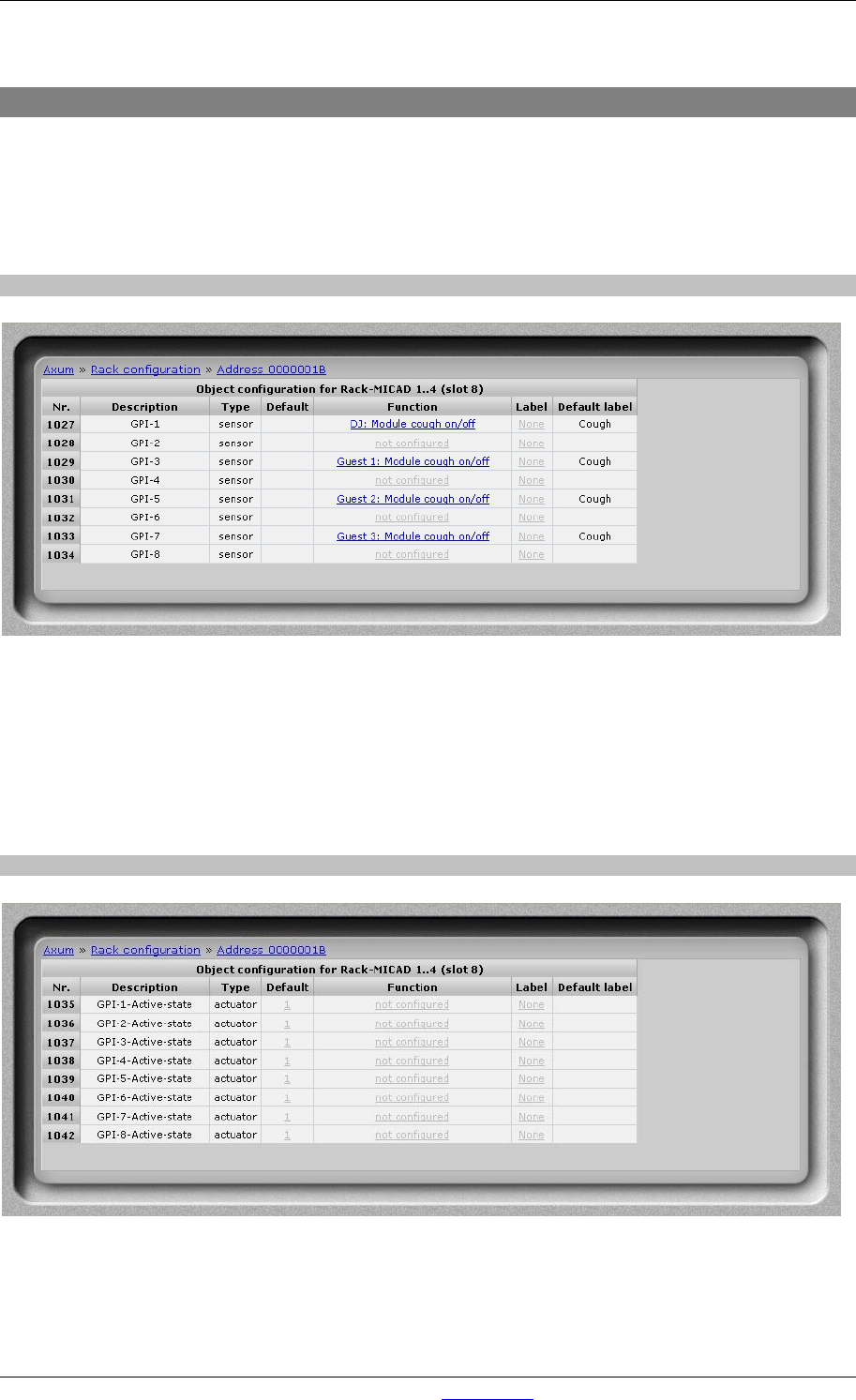User manual
Table Of Contents
- 1 Table of contents1 T
- 2 Package Contents
- 3 Introduction
- 4 System overview
- 5 Control Surfaces
- 6 AXUM Engine
- 6.1 Console 1-4 configuration
- 6.1.1 IP/Clock configuration
- 6.1.2 Global configuration
- 6.1.3 Mix buss configuration
- 6.1.4 Monitor buss configuration
- 6.1.5 Source configuration
- 6.1.6 Extern source configuration
- 6.1.7 Destination configuration
- 6.1.8 Talkback configuration
- 6.1.9 Processing presets
- 6.1.10 Module assignment
- 6.1.11 Module configuration
- 6.1.11.1 Module configuration page
- 6.1.11.2 Module preset 1A/1B, 2A/2B, 3A/3B, 4A/4B
- 6.1.11.3 Processing
- These are the programmed processing defaults for the modules. Depending on the startup settings these processing defaults will be used at startup (programmed defaults in global configuration).The field ‘Use at source select’ determines if the default module processing in the source configuration is used when a source is assigned via the module source select functionality and no processing preset is assigned in the ‘source configuration’.
- The following state/value processing sections are available:
- 6.1.11.4 Routing
- 6.1.11.5 Set module 1 to programmed startup state
- 6.1.12 Mix/monitor buss presets
- 6.1.13 Console presets
- 6.1.14 Surface configuration
- 6.1.15 Rack configuration
- 6.1.16 Source pools
- 6.1.17 Preset pools
- 6.1.18 Users
- 6.2 System configuration
- 6.1 Console 1-4 configuration
- 7 Surface(s) website
- 8 Block diagrams – Must be created
- 9 I/O Rack description
- 10 Available I/O rack cards
- 11 Patch panels
- 12 Specifications AXUM digital audio system
- 13 List Of Figures
- 14 List Of Tables
- 15 Declaration Of Conformity
- 16 Product Safety
- 17 Disclaimer
- 18 Appendix A - Network design for AXUM
- 19 Appendix B – Surface service
- 20 Appendix C – Engine functions

A·X·U·M User Manual Version 2.5 - 2011-01-28
AXUM from D&R - Phone: +31 294 418014 - E-Mail: info@d-r.nl - 65 -
9.3 GPIO
In rack configuration you can connect objects of MambaNet nodes to AXUM engine functions. Here
you can also configure the GPIO objects of your I/O cards (MambaNet nodes). By following the links,
you can reconfigure the functions that connect to the objects. The sensor and actuator data types
determine which function assigns to the object.
For a complete list of the functions, you can look up chapter 20 Appendix C – Engine functions.
9.3.1 GPI
Figure 41: GPI configuration
• Function
Here you may select which engine function is connected to the object. To use the GPI
functions you must select the hardware jumper setting TLL mode on the board (see chapter
11.3.1 GPIO TTL/Relay selection). The default jumper setting is GPO-Relay for all cards
except for the MIC input card. The default jumper setting for the MIC input card is GPIO-TTL
for GPIO 1, 3, 5 and 7 and GPO-Relay for GPIO 2, 4, 6 and 8.
9.3.2 GPI Active-state
Figure 42: GPI Active-state configuration
• Default
The gray value ‘1’ is the startup default, this may be changed by assigning a custom value (0










